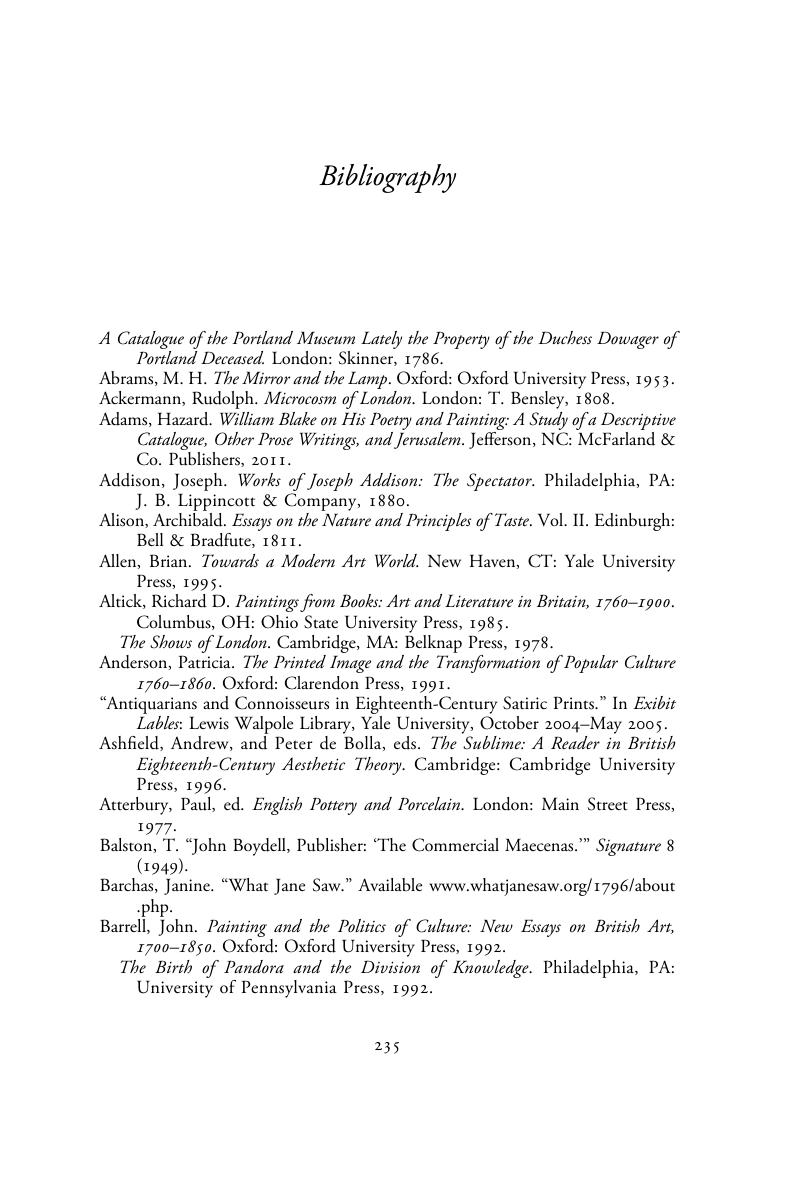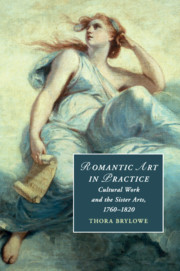Book contents
- Romantic Art in Practice
- Cambridge Studies in Romanticism
- Romantic Art in Practice
- Copyright page
- Dedication
- Contents
- Figures
- Acknowledgments
- Introduction
- Chapter 1 Original Copies
- Chapter 2 William Blake, Antiquarians, and the Status of the Copy
- Chapter 3 Literary Galleries and the Media Ecology
- Chapter 4 Poetry against the Wall
- Chapter 5 Crossing the Line
- Chapter 6 Ravaged Brides
- Notes
- Bibliography
- Index
- Cambridge Studies in Romanticism
- References
Bibliography
Published online by Cambridge University Press: 04 August 2018
- Romantic Art in Practice
- Cambridge Studies in Romanticism
- Romantic Art in Practice
- Copyright page
- Dedication
- Contents
- Figures
- Acknowledgments
- Introduction
- Chapter 1 Original Copies
- Chapter 2 William Blake, Antiquarians, and the Status of the Copy
- Chapter 3 Literary Galleries and the Media Ecology
- Chapter 4 Poetry against the Wall
- Chapter 5 Crossing the Line
- Chapter 6 Ravaged Brides
- Notes
- Bibliography
- Index
- Cambridge Studies in Romanticism
- References
Summary

- Type
- Chapter
- Information
- Romantic Art in PracticeCultural Work and the Sister Arts, 1760–1820, pp. 235 - 254Publisher: Cambridge University PressPrint publication year: 2018



